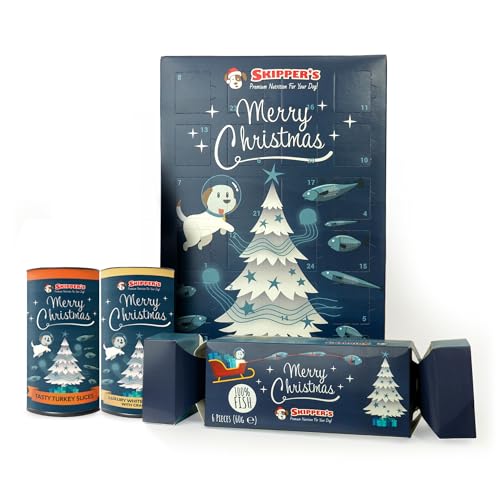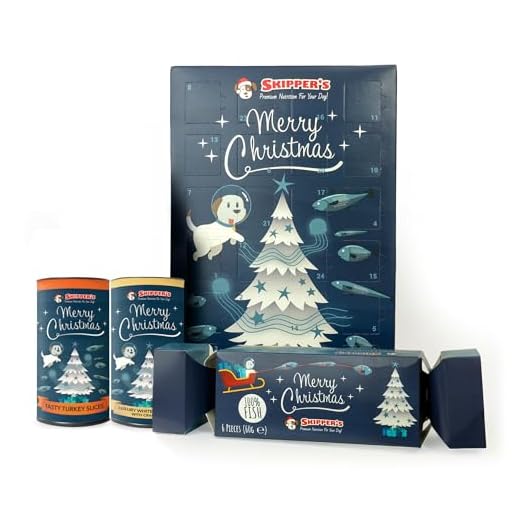




Absolutely, many four-legged companions find festive snacks delightful! I remember the first holiday season with my furry friend, Max. The joy on his face when he sniffed out the special goodies I had prepared was unforgettable. It’s fascinating how certain flavours and aromas can excite their senses, making them eager to indulge.
When selecting holiday goodies, keep in mind that not all human treats are safe. Opt for options specifically designed for canines, ensuring they are free from harmful ingredients like chocolate or xylitol. I often whip up homemade delights using peanut butter, pumpkin, and oats. Max simply can’t resist these wholesome creations, and I feel good knowing they’re safe for him.
It’s also a great opportunity to bond. Sharing these moments while watching him enjoy a tasty morsel brings a unique warmth to the festive season. Just a few special snacks can turn an ordinary day into a memorable celebration for both of you!
Do Pets Enjoy Festive Goodies?
Absolutely, many furry companions relish special seasonal snacks! When I introduced these festive morsels to my pooch, the excitement was palpable. The tail wagging and eager expressions made it clear that those treats were a hit. I made sure to choose options that were safe and healthy, avoiding any harmful ingredients like chocolate or excessive sugar.
Choosing the Right Flavours
Opt for flavours that appeal to their palate. Peanut butter, pumpkin, and sweet potato are often well-received. I once baked some homemade biscuits with peanut butter and oats, and the joy on my pet’s face was priceless. If you’re unsure about what to include, consider checking with your vet for safe ingredient recommendations.
Portion Control is Key
While festive goodies can be a delightful surprise, moderation is crucial. I always keep an eye on portion sizes to prevent any stomach issues. A small piece during a celebration can be a lovely treat, but too much can lead to discomfort. Balance is important to ensure festive fun doesn’t turn into a tummy ache!
Understanding Dogs’ Taste Preferences
To satisfy your furry friend’s palate, consider their unique taste preferences. Different breeds often have varying likes, influenced by genetics, age, and previous experiences with certain flavours. For instance, some individuals may prefer meaty flavours, while others might be drawn to fruity or sweet options. Observing your pet’s reactions to different flavours can guide you in selecting the right snacks.
Texture Matters
The texture of edibles can significantly impact enjoyment. Crunchy bites may appeal to those who love to chew, while softer options can be more suitable for senior companions with dental issues. Experimenting with different consistencies can help you determine what your pet prefers. Treats that combine textures, such as crunchy outer layers with soft fillings, often entice even the pickiest eaters.
Health Considerations
When choosing snacks, prioritise health. Opt for options that contain natural ingredients and avoid artificial additives. For puppies with sensitivities, exploring the best hypoallergenic dog food for puppies may be beneficial. This ensures that your pet stays healthy while enjoying delightful flavours. A balanced diet is key to a happy and energetic companion.
Safe Ingredients for Homemade Festive Nibbles
Opt for peanut butter, ensuring it’s free from xylitol. This nutty base adds richness and is a hit with furry companions. Combine it with whole wheat flour for structure. You can also use oat flour as a gluten-free alternative; it offers a mild taste that’s easy on sensitive stomachs.
Incorporate pumpkin puree, rich in vitamins and fibre. It promotes digestive health and lends a festive flair. Just ensure it’s pure pumpkin, not spiced pie filling, which contains harmful additives.
Sweeten the mixture with mashed bananas or applesauce. These natural sugars provide a pleasant taste without the risks associated with processed sugars. Always check for any added ingredients that might be harmful.
Carrots are a perfect addition. Shredded or diced, they introduce a crunchy texture and are full of nutrients. They also provide a nice contrast to softer ingredients.
For added flavour, consider using low-sodium chicken or beef broth. It enhances palatability and moisture, making the final product irresistible. Ensure it’s free from onions and garlic, as these can be toxic.
Lastly, a pinch of cinnamon can elevate the aroma. This spice is safe in small amounts and can offer anti-inflammatory benefits.
When baking, keep an eye on portion sizes and avoid excessive quantities of ingredients that might lead to upset stomachs. Homemade delights should always be an enjoyable experience for your furry friend!
Store-Bought Christmas Treats: What to Look For
Always check the ingredient list before purchasing any festive snacks for your furry friend. Look for high-quality, natural components. Avoid products that contain artificial flavours, colours, or preservatives. These additives can lead to health issues or digestive problems.
Key Ingredients to Seek
- Meat Sources: Ensure the primary ingredient is a specific meat, such as chicken, beef, or lamb. This indicates a higher protein content.
- Whole Grains: Ingredients like brown rice or oats provide energy and aid digestion.
- Fruits and Vegetables: Look for options that incorporate sweet potatoes, pumpkin, or blueberries, as they offer beneficial nutrients.
- Healthy Fats: Omega-3 and Omega-6 fatty acids from sources like fish oil or flaxseed promote a shiny coat and healthy skin.
Ingredients to Avoid
- Artificial Additives: Steer clear of any snacks containing chemical preservatives, colours, or flavours.
- Sugar and Salt: Excessive sugar can lead to obesity, while high sodium levels can cause health complications.
- Common Allergens: If your pet has food sensitivities, avoid grains like wheat or ingredients like dairy.
Always consider the size and texture of the goodies. Treats should be appropriately sized for your companion’s breed to prevent choking hazards. Soft or chewy varieties are often better for older animals with dental issues.
Pay attention to the packaging. Look for clear labels that indicate the product has been tested for safety and meets quality standards. Brands that are transparent about their sourcing and production processes are usually more trustworthy.
Finally, consult your vet if you’re unsure about a particular snack. They can provide tailored advice based on your companion’s specific dietary needs and health status.
Common Christmas Foods That Are Toxic to Dogs
Be cautious with festive foods around your furry friends. Some common holiday items can be harmful. Chocolate is infamous for being dangerous; even small amounts can lead to serious health issues. Theobromine, found in chocolate, is toxic and affects their heart and nervous system.
Common Culprits
Grapes and raisins are another no-go. These fruits can cause kidney failure in canines, and it doesn’t take much to trigger a reaction. Keep an eye on any fruitcake or desserts that may contain these ingredients. Similarly, onions and garlic, often used in holiday cooking, can damage red blood cells and lead to anaemia. This is a risk with any dish that contains these vegetables, including sauces and gravies.
Alcohol and Uncooked Dough
Alcohol is extremely dangerous. Even small sips can result in intoxication, leading to severe health complications. Additionally, uncooked dough that contains yeast can expand in the stomach, causing pain and possibly dangerous bloating. Always ensure that the kitchen is a safe space for your companion during the holiday festivities.
How to Introduce Christmas Treats to Your Dog
Begin with small portions. When I first introduced festive goodies to my furry friend, I opted for tiny bits. This approach allows them to acclimatise to new flavours without overwhelming their system.
Observe their reactions closely. The first time I offered a homemade pumpkin biscuit, I watched intently as my pup sniffed, licked, and eventually devoured it with enthusiasm. Body language is key; wagging tails and eager behaviour signal enjoyment, while hesitation or refusal may indicate discomfort.
Pair the new snack with a familiar routine. I found that giving a tasty morsel after a walk created positive associations. This helped my companion look forward to the delightful experience rather than feeling apprehensive about unfamiliar foods.
Gradually increase the variety. Once my four-legged friend adapted to basic delights, I expanded the options. I introduced flavours like peanut butter and sweet potato, ensuring that each new item was introduced one at a time. This method helped me identify any potential sensitivities.
Involve them in the process. When I started baking, I let my pup linger around the kitchen. Watching me prepare the goodies made him curious and excited, which turned mealtime into a fun event rather than just another feeding routine.
Always ensure safety. Before trying any new creation, I researched ingredients thoroughly. I remember the relief when I discovered that cinnamon is safe in moderation. Incorporating safe components not only guarantees my pet’s well-being but also enhances the flavour profile of the snacks.
Keep it festive but simple. I learned that extravagant recipes with complex ingredients can be overwhelming for both me and my pet. Sticking to straightforward recipes with familiar components ensures success while avoiding unnecessary complications.
Lastly, consistency matters. Establishing a tradition around holiday goodies helped create lasting memories. I make it a point to include these special snacks in our seasonal celebrations, reinforcing the bond we share during this joyous time.
Signs Your Canine Companion Enjoys Festive Snacks
Pay attention to your furry friend’s body language and reactions when offered seasonal goodies. A wagging tail and excited barks are clear indicators of anticipation and joy. If their eyes light up and they eagerly approach you, it’s a strong sign they appreciate the seasonal offerings.
Behavioural Indicators
Look for these behaviours to gauge your pet’s enjoyment:
| Behaviour | Meaning |
|---|---|
| Tail Wagging | Excitement and happiness |
| Leaning Towards You | Curiosity and eagerness |
| Sniffing Intensely | Interest in the aroma |
| Playful Barking | Inviting interaction |
Physical Reactions
Observe how your pet reacts after consuming a festive snack. Signs of enjoyment include licking their lips, a relaxed body posture, and even a playful bounce. If they seem to seek out more, it’s a clear indication they enjoyed the experience. Monitoring their overall behaviour post-snack will help you understand their preferences better.
Creating a Festive Treat-Giving Tradition
Establishing a unique ritual around giving goodies can enhance the holiday spirit for both you and your furry friend. Here’s how to create a memorable tradition:
-
Choose a Specific Day: Pick a day in December to celebrate your custom. This could be the first weekend of the month or a day that holds special significance for you and your pet.
-
Involve Family and Friends: Invite loved ones to join in. They can bring their own companions and share in the fun of giving special snacks. This fosters a sense of community.
-
Make it Interactive: Set up a little station for preparing goodies together. Everyone can pitch in to mix and bake, allowing for bonding time while creating something delicious.
-
Incorporate Personalisation: Consider your companion’s preferences. Use different flavours and textures to make the experience special. For instance, if your pal enjoys peanut butter, make sure to include it in the recipes.
-
Document the Moments: Capture the occasion with photos or videos. Create a scrapbook or an online album that showcases the joy of the day. This can become a cherished memory for years to come.
-
Give Back: As part of your tradition, consider making extra goodies to donate to a local shelter or rescue. Sharing the joy with others can be incredibly fulfilling.
Over the years, I’ve found that these gatherings not only create lasting memories but also strengthen the bond between us and our pets. Each year, we eagerly look forward to our celebration, making it a truly special occasion that we cherish together.









